All about microfiber wipes and their effective use

Microfiber cloths are versatile - they absorb moisture and clean various surfaces. This explains the popularity of fabrics with ordinary people and specialized services (cleaning). The advantage of cleaning fabrics is the quality of the materials from which they are made. Cleaning any type of dirt is more comfortable with microfiber materials.

Advantages and disadvantages
Microfiber is a fiber obtained by weaving synthetic threads: viscose, polyamide, polyester, cotton and synthetics. Non-woven materials are used for the production of napkins. Compared to other natural fibers, microfiber napkins have a number of advantages.
- The ability to absorb more liquid than its own weight. Dry fiber is lighter than its counterparts (terry cloth - up to 200 g), when wet, the weight increases several times for both products. This proves the advantage of microfiber.
- The product is pleasant to the touch and easy to work with. It is comfortable to use even when wet. If necessary, it can be squeezed out, then it becomes almost identical to its original state.
- Fast drying of wipes. The product dries quickly when exposed to sunlight or windy weather. The duration of the process does not exceed 20 minutes.
- Antibacterial composition prevents unpleasant odors during purchase and operation.
- The product does not develop fungi and bacteria, due to which an allergic reaction is impossible. When cleaning, dirt and bacteria accumulate in the product itself, so microfiber is not only hypoallergenic, but also safe.
- Wear resistance. Napkins do not fade, retain their original appearance and shape.Even with frequent use, the material has a long service life - about 3 months. Quality products can withstand 300 washes, average quality - about 200, inexpensive - about 100.
- Compactness. The napkins do not take up much space. Large folded products have a low density. Therefore, it is easy to take them with you on trips and hikes.
- Versatility. Products differ in color palette and sizes. There are compact models (30x30 or 40x40) - for household needs (for hands and wet cleaning), large (90x170) - for a bathroom or sauna (complete with a cover).



Microfiber products absorb more moisture than smooth cloths. Outwardly, they look like terry towels. Their difference lies in elasticity, size, service life and scope. They are valuable when hiking, traveling and training. They are easy to care for: just wash and dry. Products can be packed in a cover while still wet, they will dry out on their own. There is a special loop on the cover. Its convenience in storage and carrying - due to this loop, napkins can be carried with you (on a belt, backpack, fasten on a hook).
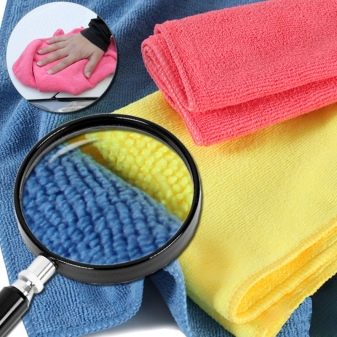

In addition to the variety of positive aspects, napkins also have negative properties. Of the minuses, the following points can be distinguished.
- It is undesirable to dry near a fire - high temperatures start the process of melting the substance.
- Stubborn stains on napkins appear from daily dirty work. Over time, the product cannot be restored to its original condition by washing. Because of this, the properties of cleaning wipes are reduced. The solution to the problem has 2 ways out: a thorough (hand) wash or buying a new product.


Microfiber wipes are popular and effective. The positive properties outweigh the disadvantages. By following the care recommendations, you can achieve a product with excellent surface cleaning properties.
Views
Microfiber napkins are available in 3 versions: woven, non-woven and knitted. The first two types of napkins can be used to clean rooms, but the latter are not so good at this task.
Sizes of small rags: 20x20; 30x30; 35x40; 40x40; 40x50 cm. They are designed for wet cleaning, for hands, for cleaning kitchen surfaces.


Also, there are rags of a larger size (up to 100 cm), above this figure there are already towels and rags for the floor. Universal cleaning wipes are sold in sets of 2-4. The set includes materials of different sizes: rags, napkins, towels and sponges. They are all made of microfiber.


Non-woven
Non-woven wipes are used for dry and wet cleaning. The cleaning process itself is fast and easy - the material absorbs moisture well, leaving no lint due to low friction. That is why, after cleaning any surface, there are no streaks, dust and stains after the completion of cleaning. They are also produced for delicate things: glasses, mirrors, screens for household appliances.



Woven
Microfiber woven fabric has a wide range of applications. It is used not only for the manufacture of napkins and cleaning rags, but also used to create upholstery for upholstered furniture: for example, a hallway, beds, sideboards, dressers can be made of this material. Diverse colors, textures and decoration options have made woven napkins tempting for designers and ordinary people. They can not only carry out cleaning, but also decorate the room.



Microfiber is a unique material with amazing properties. She is still popular. And the characteristics of the product prevail over similar ones, which facilitates the cleaning and maintenance process.
Scope of application
Microfibre cloths can be used for various types of dirt. At the same time, it is easy to achieve the best surface cleaning result, the main thing is to use a special type of product (depending on the scope of application).
- Universal - used for cleaning various objects from dust and dirt in an apartment or warehouses.

- Ribbed - cope with heavy dirt on a flat surface. Most often used for the kitchen: remove dirt, grease, streaks, sticky spots, traces of carbon deposits. They also clean the oven, stove, tiles, refrigerator and extractor hood. Used in the pre-house area - for cleaning the garage and car.

- With abrasive mesh - are indispensable for removing stubborn dirt (crust, plaque or carbon deposits, greasy stains, glue). The abrasive gently removes the top layer of dirt, while the microfiber absorbs the accumulated moisture. This model is used for cleaning cars, kitchen utensils, floor cleaning and other premises where such dirt accumulates.
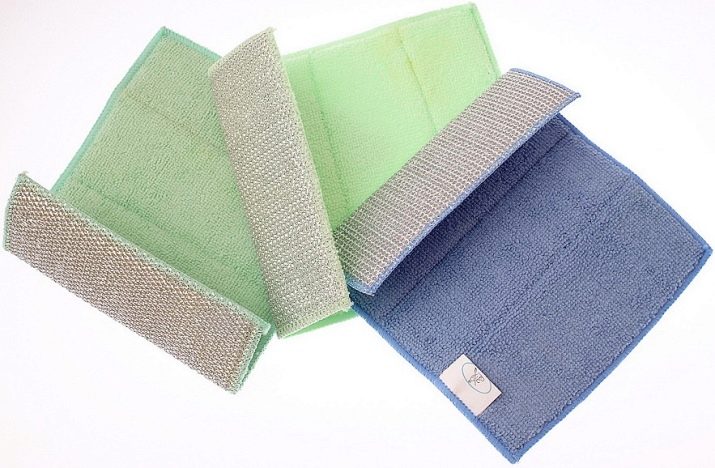
- Super absorbent - instantly absorb liquids from various surfaces. Especially valuable when cleaning items, in the accumulation of excess liquid (water, oil, fat).
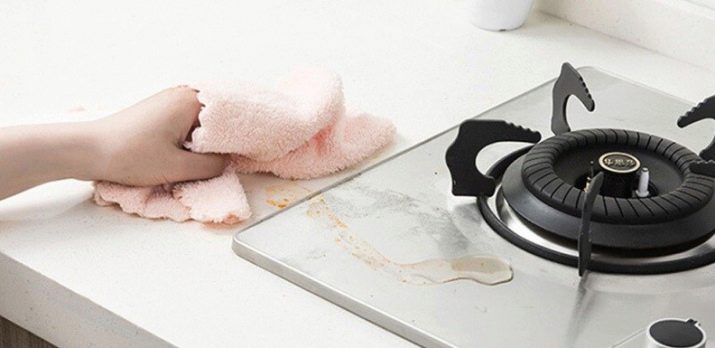
- For glass - to remove dust, dirt from crystal and glass, windows, mirrors, glass inserts in furniture.

- From dust - effectively cleans flat surfaces from dust.

- Scrubbing elements - the model looks like a metal washcloth due to the presence of intertwined fishing line. Gently removes dirt, acting only on the top layer, without affecting the enamel. The scrubber removes carbon deposits from dishes and kitchen / bath surfaces.

Small-sized soft products are used for drying dishes and hands. Scope of application - from daily needs (for hands and wet cleaning) up to the elimination of stubborn dirt. The advantage of the material is the removal of all types of dirt. This is confirmed by clinical studies and consumer reviews.

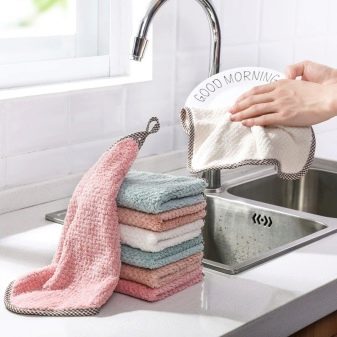
Criterias of choice
Microfiber napkins are presented in a wide range: colors (from light to dark shades), size (large and small), properties and scope. These characteristics increase the life of the product. Microfiber rags contain synthetic threads, cotton, viscose, polymer and polyester. In addition, the fiber has a universal density - very light, even when folded or wet. Larger items (from 100 g) have a density of 450 g / m2.
Good products, unlike other materials, effectively remove dust and dirt without causing allergies. Microfiber also absorbs liquid well, which does not require the use of household chemicals when cleaning surfaces.
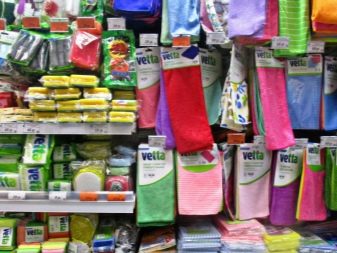

Many manufacturers are involved in the production of materials: Russian, American, Turkish, Finnish, German, Australian. No special distinguishing features were found in them, only design, price.
How to care?
Microfiber is a versatile material. The product itself has special properties. Regardless of its characteristics, microfiber also requires proper maintenance. If you follow the recommendations of washing, drying and storage, you can increase the operating period. In particular, it is the washing of the product that affects this.
- You can wash napkins in a washing machine at a delicate mode, not higher than 60 ° C. In this case, it is undesirable to use bleaching agents. Chemicals can reduce the properties of the product - the liquid will become less absorbed.
- Heavily soiled fabric must be pre-soaked in soapy water (laundry soap without additives). After that, the washing process takes place as usual.
- Drying of products is best done on a rope. Near hot appliances or open flames - material deterioration or melting.
- Ironing is undesirable. The product has the feature of self-smoothing, the main thing is to straighten the thing before drying. Exposure to hot steam can damage the fibers.


Correct washing and following care guidelines will prolong the life of your garment. The quality of the material also depends on this. Cheap counterparts are ineffective, and all because of the production process.You can distinguish low-quality raw materials by their characteristic odor (pungent chemical odor).
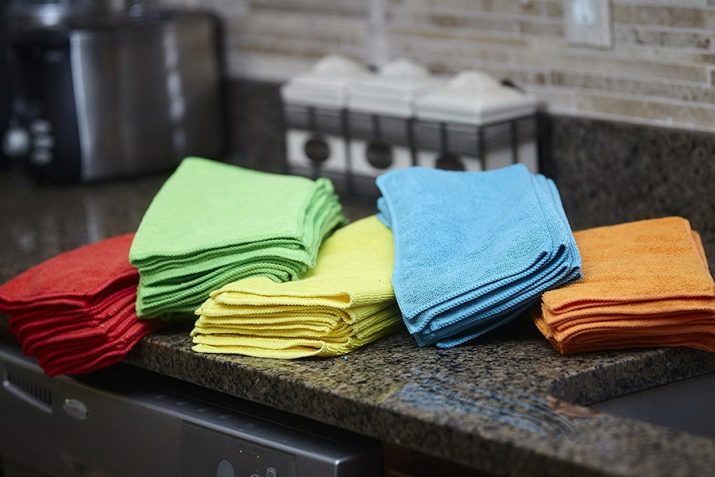
High-quality microfiber is produced at enterprises that use expensive raw materials, the material itself does not suffer from this (properties are preserved, no smell, durability).
For an overview of Tupperware microfiber napkins, see the following video.








